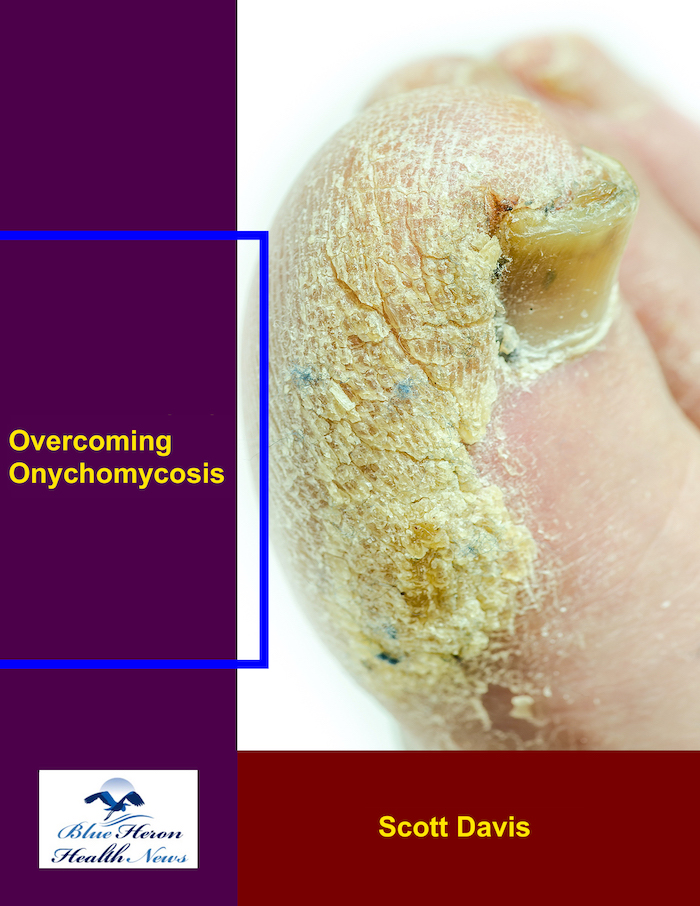
Overcoming Onychomycosis™ By Scott Davis If you want a natural and proven solution for onychomycosis, you should not look beyond Overcoming Onychomycosis. It is easy to follow and safe as well. You will not have to take drugs and chemicals. Yes, you will have to choose healthy foods to treat your nail fungus. You can notice the difference within a few days. Gradually, your nails will look and feel different. Also, you will not experience the same condition again!
What is the role of alternative therapies in treating onychomycosis?
Alternative therapies for treating onychomycosis (fungal nail infection) offer additional or complementary options to conventional medical treatments. While they are generally less studied and less potent than pharmaceutical approaches, they can still play a role—especially in mild cases, early stages, or when conventional options are unsuitable.
🔹 1. Essential Oils
Many essential oils have natural antifungal properties, including:
Tea Tree Oil (Melaleuca alternifolia):
Most researched essential oil for fungal infections.
Applied topically (diluted), it may reduce fungal growth and improve nail appearance.
Oregano Oil (contains thymol):
Strong antifungal and antibacterial.
Used topically in diluted form.
Eucalyptus, Clove, and Lavender Oils:
Also show antifungal activity in lab studies.
🔸 Caution: Essential oils can irritate the skin and should be diluted with carrier oils like coconut or olive oil.
🔹 2. Natural Acids and Soaks
Apple Cider Vinegar:
Its acidity may inhibit fungal growth.
Used in foot soaks (1 part vinegar to 2 parts water).
Baking Soda:
May help reduce fungal growth by altering pH.
Used in paste form or added to foot soaks.
🔹 3. Garlic
Contains allicin, a natural antifungal compound.
Crushed garlic can be applied topically, though it may cause skin irritation.
Garlic supplements are also taken orally, but clinical evidence for systemic effectiveness is limited.
🔹 4. Vicks VapoRub
Contains camphor, menthol, and eucalyptus oil.
Small studies suggest it may improve the appearance of fungal nails with daily application over several months.
🔹 5. Probiotics
Some evidence suggests that oral probiotics can support immune function and help manage fungal overgrowth indirectly by improving gut and skin microbiomes.
🔹 6. Homeopathy & Traditional Medicine
Some people use homeopathic remedies or Ayurvedic oils, but evidence is largely anecdotal.
These should not replace evidence-based care, especially for moderate to severe infections.
🟠 Effectiveness and Limitations
Alternative therapies are often less effective and slower-acting than conventional antifungals.
Best suited for:
Early or mild infections
Maintenance after successful treatment
Patients who can’t take oral medications
Not ideal for people with diabetes, immunosuppression, or advanced infections.
✅ Summary
Alternative therapies offer low-risk, low-cost, and accessible options for managing onychomycosis—especially for those seeking natural treatments or who can’t tolerate medications. However, they are usually adjunctive, not replacements, for medical treatment in more serious cases.
Would you like a guide to using a specific natural remedy or a comparison with pharmaceutical options?
Diet does not directly cure onychomycosis (fungal nail infection), but it can support the body’s immune system and overall health, which may improve treatment outcomes and reduce recurrence. Here’s how diet plays a supportive role:
1. Supports Immune Function
A strong immune system helps fight off fungal infections more effectively.
Nutrients important for immune health include:
Vitamin C (found in citrus fruits, berries, peppers)
Zinc (in nuts, seeds, whole grains)
Vitamin D (from sunlight, fortified foods, or supplements)
Protein (needed for skin and nail repair)
2. Reduces Sugar and Yeast Growth
Diets high in sugar may promote fungal overgrowth, particularly in people prone to yeast-related conditions.
Reducing refined carbohydrates and added sugars may help limit conditions that favor fungal growth.
3. Helps Control Underlying Conditions
Diseases like diabetes increase the risk and severity of fungal nail infections.
A healthy diet can help manage blood sugar levels and reduce the risk of infection or recurrence.
4. Promotes Healthy Nail Growth
Nutrients like biotin, iron, and omega-3 fatty acids support nail strength and regrowth, which is important during the healing phase.
5. Anti-inflammatory Effects
A diet rich in vegetables, fruits, whole grains, lean proteins, and healthy fats may help lower inflammation, supporting overall recovery.
Summary:
While diet won’t replace antifungal medications or topical treatments, eating a nutrient-rich, low-sugar, balanced diet can support immune function, promote nail health, and help reduce the chances of recurrence.
Would you like a list of specific foods that support nail health or a sample anti-fungal-friendly meal plan?
Overcoming Onychomycosis™ By Scott Davis If you want a natural and proven solution for onychomycosis, you should not look beyond Overcoming Onychomycosis. It is easy to follow and safe as well. You will not have to take drugs and chemicals. Yes, you will have to choose healthy foods to treat your nail fungus. You can notice the difference within a few days. Gradually, your nails will look and feel different. Also, you will not experience